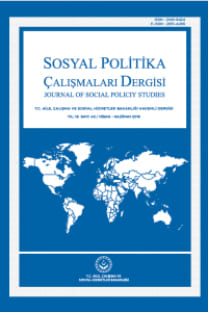Türkiye'de Ergen Profili
Türkiye’de Ergen Profili 2008 Araştırması ülkemizin 65 ilinde 5765 katılımcı ile yapılmış ve sonuçlandırılmıştır. Bilimsel araştırma yöntemlerinden nicel araştırma yöntemi ve bu yöntemin yüz yüze anket tekniğine dayalı olarak yapılan bu çalışmada çok aşamalı tabakalı olasılıklı küme örneklemi kullanılmıştır.Araştırma çerçevesinde, ergen, çeşitli açılardan sorgulama konusu yapılmış ve bu bağlamda bir bütün olarak ergenlerin (ve ailelerinin) sosyo-demografik özelikleri ve göç geçmişleri, içinde bulundukları hane yapısı ve yaşadıkları hanenin fiziksel özellikleri; öğrenci olanların okul hayatı ile ilgili durumları, eğitim sistemi ve okul hayatı ile ilgili memnuniyetleri; çalışanların ne tür işlerde çalıştıkları, yaptıkları işten memnuniyetleri, kazançları, çalışma saatleri; aile ve arkadaş ilişkileri, kişilik özellikleri, hisleri, davranışları, sağlık durumları, karşı karşıya oldukları riskler, ne ölçüde şiddete maruz kaldıkları, din ile olan ilişkileri, gelecek tahayyülleri, boş vakit değerlendirme biçimleri, internet kullanım alışkanlıkları ve medya takip alışkanlıkları sorgulanmıştır.Nihai olarak ise, araştırma verilerinden hareketle, sorunlar ve çözümlerine dair bir öneriler demeti hazırlanmıştır.
Anahtar Kelimeler:
ergen, benlik, duygusal olgunluk, kişilik, kimlik duygusu,
Adolescent Profile in Türkiye
The research of Adolescent Profile in Turkey 2008 has been carried out in 65 provinces of Turkey, with 5765 participants. The survey has been conducted with the quantitative research method and face-to-face interview technique of this method using multistage stratified cluster probability sampling.In this survey, the adolescents have been the subject of the study from various perspectives; in this respect, several different aspects of their socio-demographic characteristics, migratory backgrounds; conditions and physical qualities of the households they live in, schoolrelated issues of the students, education system and their satisfaction levels with school life; occupational fields of the workers, and their satisfactions derived from their work, their income and work hours; their relations with their families and friends, personal characteristics, emotions, behaviors, states of health, the risks they encountered, the extent to which they are exposed to violence, their relations with religions, future expectations, activities they are engaging in at their leisure time, their attitudes towards the use of internet, and their mediafollow up behaviors have been investigated.Consequently, through the research data, a series of suggestions concerning the problems and their solutions have been prepared.
Keywords:
adolescent, ego, emotional maturity, personality, identity,
- ISSN: 2148-9424
- Yayın Aralığı: Yılda 4 Sayı
- Başlangıç: 2012
- Yayıncı: Aile,Çalışma ve Sosyal Hizmetler Bakanlığı
